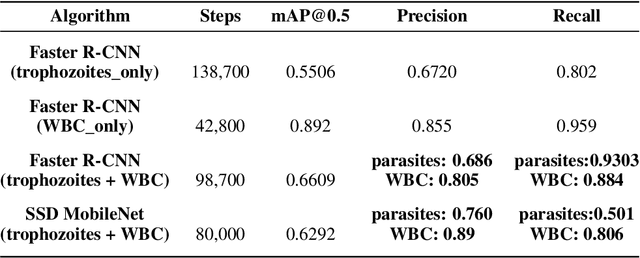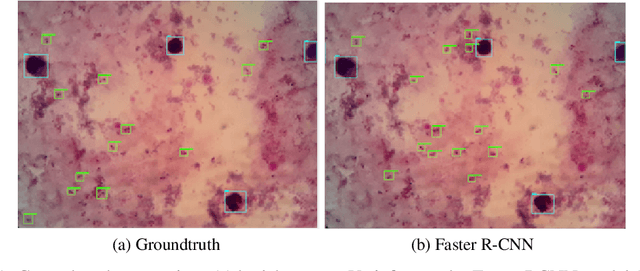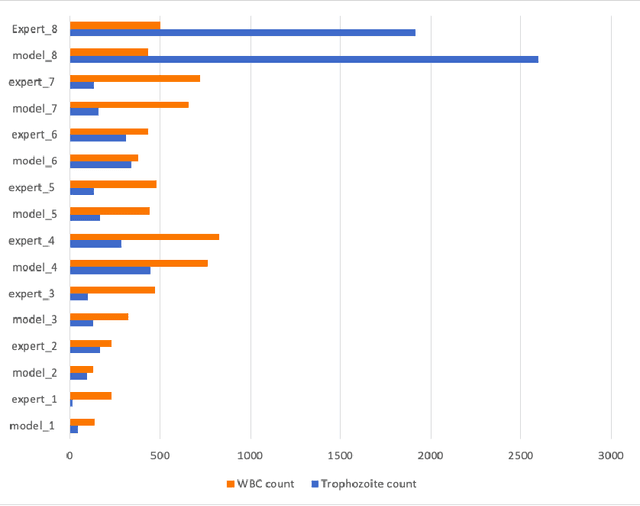Localization of Malaria Parasites and White Blood Cells in Thick Blood Smears
Paper and Code
Dec 03, 2020


Effectively determining malaria parasitemia is a critical aspect in assisting clinicians to accurately determine the severity of the disease and provide quality treatment. Microscopy applied to thick smear blood smears is the de facto method for malaria parasitemia determination. However, manual quantification of parasitemia is time consuming, laborious and requires considerable trained expertise which is particularly inadequate in highly endemic and low resourced areas. This study presents an end-to-end approach for localisation and count of malaria parasites and white blood cells (WBCs) which aid in the effective determination of parasitemia; the quantitative content of parasites in the blood. On a dataset of slices of images of thick blood smears, we build models to analyse the obtained digital images. To improve model performance due to the limited size of the dataset, data augmentation was applied. Our preliminary results show that our deep learning approach reliably detects and returns a count of malaria parasites and WBCs with a high precision and recall. We also evaluate our system against human experts and results indicate a strong correlation between our deep learning model counts and the manual expert counts (p=0.998 for parasites, p=0.987 for WBCs). This approach could potentially be applied to support malaria parasitemia determination especially in settings that lack sufficient Microscopists.
 Add to Chrome
Add to Chrome Add to Firefox
Add to Firefox Add to Edge
Add to Edge